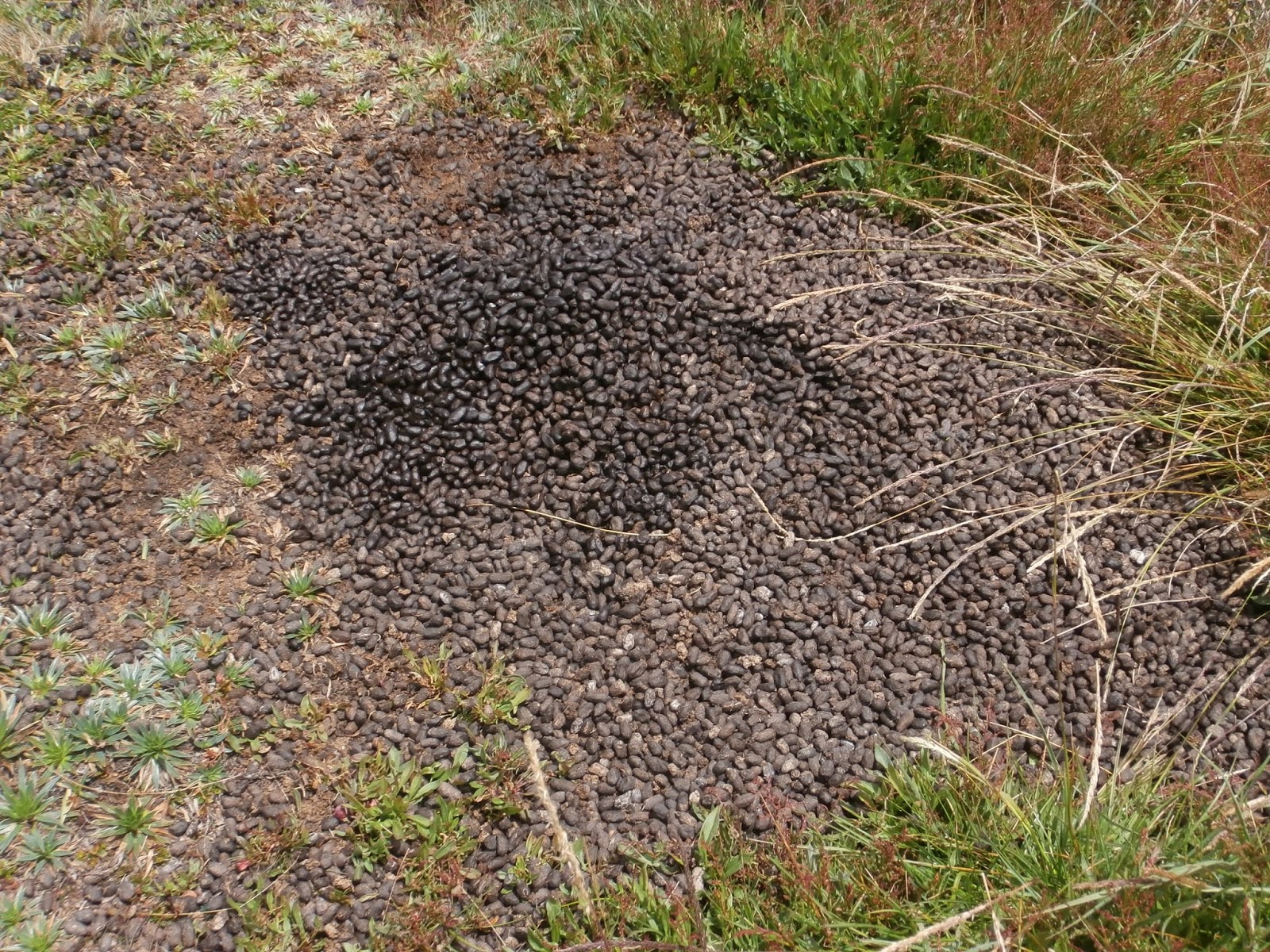This really was supposed to be the blog entry about food and other good stuff, but I had such an unbelievably great time today on my excursion to the El Cajas National Park that I simply have to write about it.
 |
| Driving through an Alpine valley toward the cloud forest |
 |
| Our starting point was above this lake |
At about 12,500 feet one can feel every little incline, and even walking downhill requires more effort than one would suspect. Miguel, himself around the 60-year-mark, made sure that we paced ourselves, with many stops and the opportunity to look around. After the first kilometer or so, our small group was alone, and we didn't see anybody else except for two fishermen in the distance. The soil is moist, cushioning every step in a pleasant way. In some spots it felt as if we were walking on a sponge, and in a few places we had to be careful to not slip in muddy sections. There were lakes everywhere, some large, some tiny, and rivulets were babbling along. Wherever one looked, there were small waterfalls, and the sound of running water was ever present.
It was a good thing that we had to walk at an easy pace and stop often because it allowed us to really look around and notice all those tiny little flowers and plants that dot the ground. There was one plant that looked like a dandelion, but it had no stem and the blossom was stuck to some flat leaves; the same was true for the daisies—no stem. Next to the flowers were lichen-like plants that were soft to the touch and reminded me of star-like patterns one finds in baroque church ornamentation. It was a foreign world with a ground-hugging flora that would suddenly explode into color, only to meld back into all shades of green.
We did walk through a small stretch of forest. These were quinoa trees, which don't have anything to do with the fashionable grainy stuff that health-foodies like so much. The tree is called in Spanish arbol de papel, or paper tree, because of its bark that flakes off like the layers of a croissant—seriously, they should call it croissant tree! These odd creatures were between 300 to 500 years old, all gnarly and twisted in inexplicable patters. The bark reminded me of that of madrone trees that also lose their outer layers.
We didn't see any wildlife except a few tiny birds, but we did come across a healthy pile of something resembling dog shit; Miguel told us that it was the "poo" of the lobo de la montana. A while later, some not-so-inviting smell alerted us to the rabbit-like droppings of alpacas, the cousins of llamas that like to crap in the same spot over and over again.
 |
| The lobo de la montana craps big'uns ... |
 |
| ... and the alpaca produces coffee-bean sized pellets |
After about three hours we finally got back to the road, at a somewhat lower elevation than where we had started. Our driver was waiting for us, and the four of us piled into the van. Included in the $50 price for this tour was our lunch, which we ate in a scenic restaurant at our original starting point. We were greeted with a canelazo, a tart yet sweet, slightly alcoholic drink that's served warm, made from a particular plant the name of which escapes me (I later happened to see it in a street vendor's basket). This was followed by one of the best potato soups I ever had, with lots of fresh corn kernels and a generous slice of avocado in it. And the main course was trout—the others went for the pan-fried kind while I opted for the steamed version, with a garlic-cream sauce. Delicious.
 |
| With guide Miguelito |
After lunch, we drove back down the mountain to Cuenca. On the way we saw some wild llamas on the road, and the vistas were reminiscent of a drive through the Alps. I have to say that our group was perfect: Julie, Bob, and I really hit it off, as if we had known each other for years. And Miguel was the perfect guide—not overbearing, full of interesting information, with a good sense of humor, and just the kind of attitude that actually makes you want to tip him. If you ever need a personal guide—who has been trained by the ministry of tourism—whilst in Cuenca, he can be reached at 099 820 6423, or miketours1@hotmail.com. I hope you enjoyed the photos of my excursion to the paramo, and I hope that you will—someday—get a chance to see this amazing place yourselves.
 |
| The paramo at its best |
Jürgen

















No comments:
Post a Comment